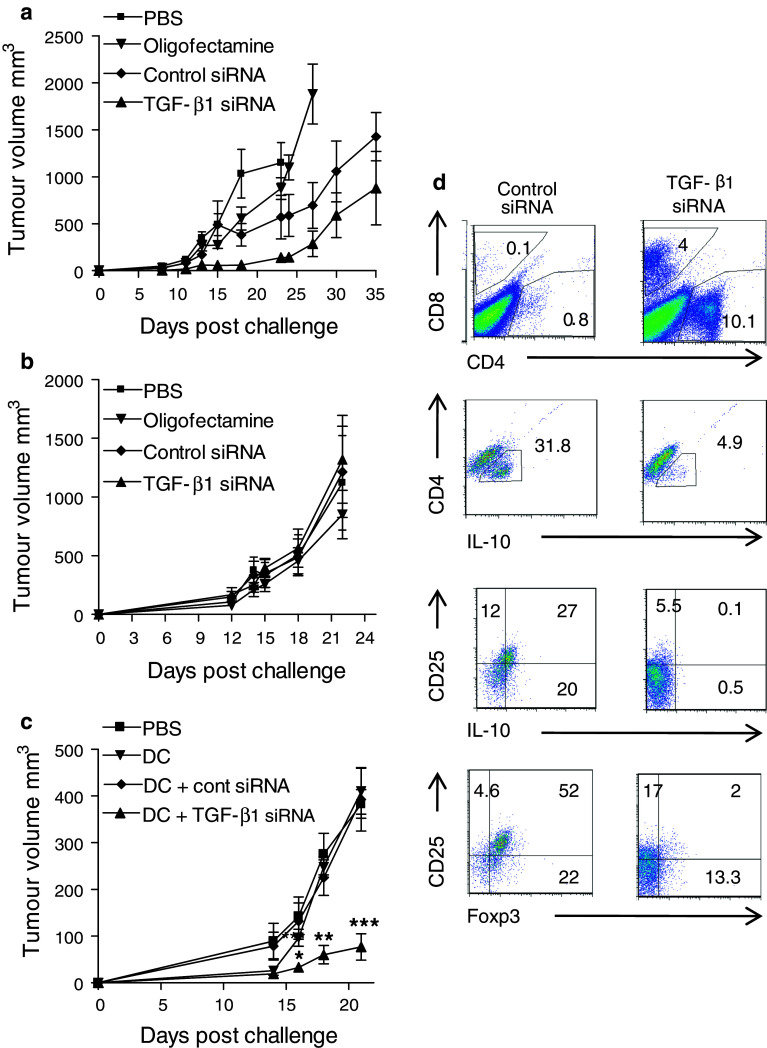Fig. 2.
Treatment with TGF-β1 siRNA suppresses Treg cell induction and enhances the efficacy of DC tumor vaccine. a BALB/c mice were injected with 2 × 105 CT26 colon carcinoma cells in the flank on day 0. Mice treated from days −5, −3, −1, 1, and 3 (a) or every 2 days from day 6 (b) with 5 μg of siRNA for TGF-β1 or control siRNA complexed with oligofectamine or with oligofectamine alone. Tumor growth was monitored. The experiment was terminated when tumors reached a diameter of 15 mM. c C57BL/6 mice were injected in the flank on day 0 with 2 × 105 cells B16F10 melanoma cells. Mice were treated on day 3, 10, and 17, with PBS or a DC vaccine, comprising 5 × 105 DC loaded with hs/irr B16F10 cells and stimulated with CpG, washed and injected into the site of the tumor. On day 2, 3, 4, 9, 10, 11, 16, 17, and 18, the relevant groups were also injected with 5 μg TGF-β1 or control siRNA into the tumor site. Growth was monitored over 21 days. *P < 0.05, **P < 0.01, and ***P < 0.001 versus PBS or DC vaccine with control siRNA. d Tumors were removed on day 21 and cells stimulated with PMA and ionomycin overnight were stained for CD4, CD8, CD25, IL-10, and Foxp3 and analyzed by FACS. Results presented are mean ± SD or representative FACS plots for 5–6 mice per group and are representative of 3 experiments

